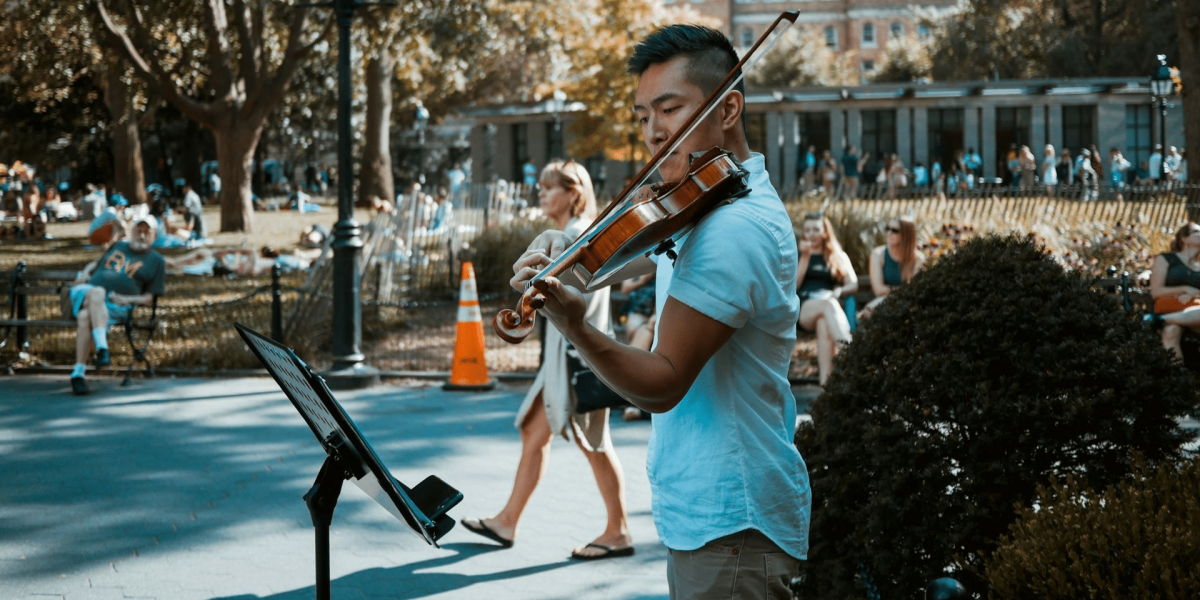Within the dynamic tapestry of urban life, street musicians play a distinctive and often underappreciated role. Far beyond being mere purveyors of melodies in bustling streets, these artists contribute significantly to the cultural landscape of cities. This article delves into the cultural impact of street musicians, exploring how their performances transcend mere entertainment, becoming a profound reflection of the societies in which they play.
The Soundtrack of City Life
Street musicians, armed with their instruments and talents, create a live soundtrack that accompanies the daily rhythm of city life. Their music becomes intertwined with the hustle and bustle of crowded streets, echoing off buildings, and resonating with pedestrians. This auditory backdrop not only provides a sensory experience but also contributes to the identity of a place, creating a unique atmosphere that defines the city’s cultural vibrancy.
In the bustling streets of cities like New Orleans, the soulful notes of jazz musicians infuse the air, becoming synonymous with the city’s spirit. In Paris, the accordion’s melodic strains along the Seine River evoke a sense of romance and nostalgia. These diverse musical expressions enhance the cultural character of each city, making the streets come alive with a symphony of sounds.
Bridging Social Gaps
One of the remarkable aspects of street musicians is their ability to bridge social gaps. Regardless of socioeconomic backgrounds, people from all walks of life stop to listen, share a moment, and appreciate the music. In this shared experience, cultural barriers dissolve as individuals connect through a universal language – music. Street musicians, in their impromptu performances, create a sense of community among diverse urban populations, fostering unity through the appreciation of artistic expression.
In cities like London, where the Underground becomes a stage for musicians of various genres, commuters from different walks of life find common ground in the shared enjoyment of music. The democratic nature of street performances offers a space where societal divisions blur, if only for a moment, creating a sense of shared humanity.
Preserving Cultural Heritage
Street musicians often incorporate local and traditional elements into their performances, acting as cultural custodians. Whether playing folk tunes, regional melodies, or culturally significant compositions, these musicians contribute to the preservation of heritage. Their performances become a living archive, passing down cultural nuances to both residents and visitors. In this way, street musicians become inadvertent ambassadors of cultural heritage, ensuring that the echoes of tradition persist in the ever-evolving urban landscape.
In cities like Tokyo, where ancient and modern coexist, street musicians seamlessly blend traditional instruments with contemporary sounds. This fusion not only captivates audiences but also serves as a living testament to the city’s rich cultural history.
Fostering Artistic Expression
The streets serve as an unconventional stage for artists seeking to express themselves beyond the confines of formal venues. Street musicians showcase a diverse range of genres and styles, from classical melodies to experimental compositions. This eclectic mix not only exposes audiences to a variety of musical expressions but also encourages artists to push boundaries and explore new creative territories. The streets thus become a melting pot of artistic experimentation, enriching the cultural fabric of the city.
In cities such as Berlin, known for its avant-garde art scene, street musicians contribute to the city’s reputation for pushing artistic boundaries. From electronic beats to experimental performances, the streets of Berlin become a canvas for musical innovation, reflecting the city’s commitment to artistic freedom.
Contrarian Statement: Navigating Challenges
Despite their positive contributions, street musicians face challenges such as public indifference, regulatory constraints, and economic struggles. In some instances, their presence is met with apathy as people rush by, absorbed in their daily routines. Regulatory hurdles, including permits and noise ordinances, can limit the freedom of these artists. Additionally, many street musicians rely on tips and donations, making financial stability a constant concern. Navigating these challenges requires a delicate balance between artistic freedom and adherence to civic regulations.
In cities like San Francisco, where tech giants dominate the landscape, street musicians face unique challenges amid the bustling tech-driven environment. Striking a balance between preserving the artistic spirit and adhering to the regulatory framework becomes a delicate dance.
Conclusion
In the intricate dance of city life, street musicians emerge as cultural alchemists, transforming ordinary spaces into vibrant hubs of artistic expression. Their impact extends beyond the immediate enjoyment of a passerby, influencing the very essence of the communities they engage with. The soundtrack they provide, the social bridges they build, and the cultural heritage they preserve collectively shape the soul of a city.
As cities evolve, the role of street musicians remains pivotal in preserving tradition, fostering unity, and encouraging artistic innovation. Their melodies weave into the fabric of urban existence, leaving an indelible mark on the cultural narrative of the places they call their stage. In recognizing and celebrating the cultural impact of street musicians, we embrace the richness they bring to our daily lives and the collective identity of our cities. Ultimately, the key to success lies in not just choosing a location but in creating a cafe experience that resonates with the diverse and discerning tastes of New York City.
















